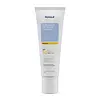What's inside
What's inside
 Key Ingredients
Key Ingredients

 Benefits
Benefits

 Concerns
Concerns

 Ingredients Side-by-side
Ingredients Side-by-side

Water
Skin ConditioningHomosalate
Skin ConditioningOctocrylene
UV AbsorberButyl Methoxydibenzoylmethane
UV AbsorberEthylhexyl Salicylate
UV AbsorberMethylene Bis-Benzotriazolyl Tetramethylbutylphenol
UV FilterEthylhexyl Triazone
UV AbsorberGlycerin
HumectantAluminum Starch Octenylsuccinate
AbsorbentSodium Potassium Aluminum Silicate
Diisopropyl Adipate
EmollientPotassium Cetyl Phosphate
EmulsifyingPhenoxyethanol
PreservativeTriacontanyl Pvp
HumectantCetyl Alcohol
EmollientGlyceryl Stearate
EmollientHydroxyacetophenone
AntioxidantSilica
AbrasiveBis-Ethylhexyloxyphenol Methoxyphenyl Triazine
Skin ConditioningTocopheryl Acetate
AntioxidantHydrolyzed Jojoba Esters
Skin ConditioningPEG-75 Stearate
Titanium Dioxide
Cosmetic ColorantDimethicone
EmollientAcrylates/C10-30 Alkyl Acrylate Crosspolymer
Emulsion StabilisingCeteth-20
CleansingParfum
MaskingSteareth-20
CleansingAcrylates/Dimethicone Copolymer
Skin ConditioningDisodium EDTA
Jojoba Esters
EmollientSodium Hydroxide
BufferingWater, Homosalate, Octocrylene, Butyl Methoxydibenzoylmethane, Ethylhexyl Salicylate, Methylene Bis-Benzotriazolyl Tetramethylbutylphenol, Ethylhexyl Triazone, Glycerin, Aluminum Starch Octenylsuccinate, Sodium Potassium Aluminum Silicate, Diisopropyl Adipate, Potassium Cetyl Phosphate, Phenoxyethanol, Triacontanyl Pvp, Cetyl Alcohol, Glyceryl Stearate, Hydroxyacetophenone, Silica, Bis-Ethylhexyloxyphenol Methoxyphenyl Triazine, Tocopheryl Acetate, Hydrolyzed Jojoba Esters, PEG-75 Stearate, Titanium Dioxide, Dimethicone, Acrylates/C10-30 Alkyl Acrylate Crosspolymer, Ceteth-20, Parfum, Steareth-20, Acrylates/Dimethicone Copolymer, Disodium EDTA, Jojoba Esters, Sodium Hydroxide
Cyclopentasiloxane
EmollientDimethicone Crosspolymer
Emulsion StabilisingPEG-12 Dimethicone/PPG-20 Crosspolymer
Ethylhexyl Methoxycinnamate
UV AbsorberC12-15 Alkyl Benzoate
AntimicrobialDiethylamino Hydroxybenzoyl Hexyl Benzoate
UV FilterDiethylhexyl Butamido Triazone
UV AbsorberCaprylyl Methicone
Skin ConditioningZinc Oxide
Cosmetic ColorantTitanium Dioxide
Cosmetic ColorantBis-Ethylhexyloxyphenol Methoxyphenyl Triazine
Skin ConditioningCaprylic/Capric Triglyceride
MaskingPhysalis Angulata Extract
Skin ProtectingDiethylhexyl Syringylidenemalonate
Skin ProtectingParfum
MaskingCyclopentasiloxane, Dimethicone Crosspolymer, PEG-12 Dimethicone/PPG-20 Crosspolymer, Ethylhexyl Methoxycinnamate, C12-15 Alkyl Benzoate, Diethylamino Hydroxybenzoyl Hexyl Benzoate, Diethylhexyl Butamido Triazone, Caprylyl Methicone, Zinc Oxide, Titanium Dioxide, Bis-Ethylhexyloxyphenol Methoxyphenyl Triazine, Caprylic/Capric Triglyceride, Physalis Angulata Extract, Diethylhexyl Syringylidenemalonate, Parfum
 Reviews
Reviews

Ingredients Explained
These ingredients are found in both products.
Ingredients higher up in an ingredient list are typically present in a larger amount.
You might know this ingredient as Tinosorb S or Bemotrizinol. It is a UV filter that covers both UVA and UVB rays.
This ingredient has two peak UV absorption peaks ( 310 and 340 nm) and is able to absorb both UV-A and UV-B rays. This ingredient works by preventing UV rays from reaching and damaging your skin.
On top of that - it is highly photostable and helps prevent the photodegration of other sunscreen ingredients such as avobenzone.
Tinosorb S is allowed in the EU, Australia, and Asia. It is close to being approved by the FDA and we'll hopefully get this ingredient in the U.S. by late 2025.
Fun fact: Tinosorb S is the most effective UV absorber at maximum concentration (measured by SPF) permitted in the EU.
This ingredient is oil-soluble, so your oil-cleansers will take this right off at night.
Learn more about Bis-Ethylhexyloxyphenol Methoxyphenyl TriazineParfum is a catch-all term for an ingredient or more that is used to give a scent to products.
Also called "fragrance", this ingredient can be a blend of hundreds of chemicals or plant oils. This means every product with "fragrance" or "parfum" in the ingredients list is a different mixture.
For instance, Habanolide is a proprietary trade name for a specific aroma chemical. When used as a fragrance ingredient in cosmetics, most aroma chemicals fall under the broad labeling category of “FRAGRANCE” or “PARFUM” according to EU and US regulations.
The term 'parfum' or 'fragrance' is not regulated in many countries. In many cases, it is up to the brand to define this term.
For instance, many brands choose to label themselves as "fragrance-free" because they are not using synthetic fragrances. However, their products may still contain ingredients such as essential oils that are considered a fragrance by INCI standards.
One example is Calendula flower extract. Calendula is an essential oil that still imparts a scent or 'fragrance'.
Depending on the blend, the ingredients in the mixture can cause allergies and sensitivities on the skin. Some ingredients that are known EU allergens include linalool and citronellol.
Parfum can also be used to mask or cover an unpleasant scent.
The bottom line is: not all fragrances/parfum/ingredients are created equally. If you are worried about fragrances, we recommend taking a closer look at an ingredient. And of course, we always recommend speaking with a professional.
Learn more about ParfumTitanium dioxide is a mineral UV filter widely used in sunscreens and cosmetics.
It is one of only two UV filters officially classified as “mineral” by regulatory agencies, the other being zinc oxide.
Titanium dioxide provides broad-spectrum protection mostly in the UVB and UVAII range, with some protection in the UVAI range.
While its UVA protection isn’t as strong as zinc oxide’s, the difference is minor.
A common myth is that mineral UV filters reflect UV light. However, modern research shows titanium dioxide absorbs UV radiation like chemical filters (~95% absorption & 5% reflection).
Thanks to its non-irritating nature, titanium dioxide is suitable for sensitive, acne-prone, or redness-prone skin. It is unlikely to cause "eye sting" like other sunscreen ingredients.
A major drawback of this ingredient is its white cast and thick texture. This is why mineral sunscreens often leave a white cast and are less cosmetically elegant than chemical/hybrid sunscreens.
To improve white cast and spreadability, micronized or nano-sized titanium dioxide is often used.
There are ongoing concerns surrounding nano-titanium oxide's impact on marine ecosystems.
There is no conclusive evidence that any form of titanium oxide (or any other sunscreen ingredients) will cause harm to marine ecosystems or coral reefs. The science is still developing but many consumers are keeping a close eye on this issue.
Please note, many destinations have reef-safety sunscreen rules. For instance, the U.S. Virgin Islands advises all visitors to use non-nano mineral sunscreens.
Nano mineral sunscreens once raised safety concerns about absorption into skin.
Extensive research has shown that they do not penetrate healthy or damaged skin; they remain safely on the surface and the top layer of dead skin (stratum corneum).
You'll likely find titanium dioxide bundled with alumina, silica, or dimethicone. These ingredients help make titanium dioxide highly photostable; this prevents it from interacting with other formula components under UV light.
Learn more about Titanium Dioxide